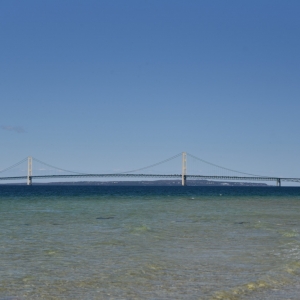The Stream, October 13, 2021: A Quarter of U.S. Infrastructure Faces Risks From Flooding, Study Says
YOUR GLOBAL RUNDOWN
- South African water activists are struggling to hold governmental agencies accountable for high levels of pollution in the country’s waterways.
- A new study finds nearly a quarter of U.S. infrastructure is at risk of becoming inoperable due to flooding in the next 30 years.
- Millions of people could lose access to water if an abandoned vessel in the Red Sea continues to deteriorate.
- Israel signs an agreement to increase the amount of freshwater it shares with Jordan.
Many residents in a waterfront community in Wisconsin have no idea that a local creek is contaminated with high levels of PFAS.
“I feel disappointed and sad about not knowing what is affecting our health.” – Carnetta Galvin, a resident in the Darbo-Worthington neighborhood in Madison, Wisconsin. In 2019, the Starkweather Creek in Wisconsin contained higher levels of two highly scrutinized types of PFAS chemicals than any other waters the Department of Natural Resources tested that year. Wisconsin Watch reports that some residents who live near the body of water, including Galvin, had no idea. The DNR first added Starkweather Creek to its impaired waters list in 1998, but until this past August, no public meetings had been dedicated to the issue. Although the creek is not used as a drinking water source, it is a popular recreation area and wildlife habitat.
IN RECENT WATER NEWS
In Case You Missed It:
HotSpots H2O: New Report Urges Policymakers to ‘Wake Up to the Looming Water Crisis’ – Current rates of progress on water, sanitation, and hygiene would need to quadruple to meet UN targets.
What’s Up With Water – October 11, 2021 – This week’s episode of What’s Up With Water covers a UN report calling for equitable distribution of water between Israel and Palestine, officials in the Great Lakes region who will provide bottled water to two communities contending with contaminated drinking water and Michigan health officials recommending thousands of residents in Benton Harbor use bottled water for cooking, drinking, and brushing teeth.
Who Is Responsible For Pollution in South African Rivers? Activists Struggle to Hold Government Accountable
Garbage and high levels of E. coli are contaminating South Africa’s rivers, but environmental activists are struggling to hold government officials accountable, according to the Daily Maverick. Local and federal agencies in South Africa often try to put the blame on one another, or downplay the urgency of the issue altogether, making it hard to hold any one agency to their word. Yet, even the government’s own data points to a disaster. The South African Department of Water and Sanitation’s Master Plan Call to Action from 2018 found that between 1999 and 2011, the number of main rivers in South Africa classified under poor ecological conditions increased by 500 percent, with some past the point of repair.
TODAY’S TOP WATER STORIES, TOLD IN NUMBERS
30-YEAR FLOOD RISK
A new study from the First Street Foundation analyzed the 30-year flood risk for every city and county in the United States, finding that nearly 25 percent of roads hospitals, power stations, water treatment facilities and other infrastructure is at risk of becoming inoperable due to flooding. The study found that Louisiana, Florida, Kentucky and West Virginia face the greatest risk. Louisiana, the report said, is home to six of the nation’s most at-risk counties.
- Why it matters: Comprehensive flood risk data is available, First Street Foundation Head of Research and Development Jeremy Porter told Circle of Blue earlier this year. But homeowners do not typically know where to find it. “Mortgage companies, institutional investors, lenders, they all have access to that data,” he said. “The problem is that regular homeowners don’t know what that flood risk looks like.”
8 MILLION PEOPLE
The FSO Safer, a tanker in the Red Sea, was abandoned in 2017. Negotiations are still under way to offload an estimated 1.1 million barrels of crude oil that remain on the ship, and as the vessel continues to deteriorate, a spill is increasingly probable. The Guardian reports that the impact of an oil spill could cause around 8 million people to lose access to running water and destroy Yemen’s Red Sea fishing stock within the first three weeks.
ON THE RADAR
Israel will double the amount of freshwater it provides to Jordan, according to an agreement between the two countries signed this week. The Algemeiner reports that the water deal comes as Israeli Prime Minister Naftali Bennett, who took over from former prime minister Benjamin Netanyahu, has made strengthening ties with Jordan a priority.
Jane is a Communications Associate for Circle of Blue. She writes The Stream and has covered domestic and international water issues for Circle of Blue. She is a recent graduate of Grand Valley State University, where she studied Multimedia Journalism and Women, Gender and Sexuality Studies. During her time at Grand Valley, she was the host of the Community Service Learning Center podcast Be the Change. Currently based in Grand Rapids, Michigan, Jane enjoys listening to music, reading and spending time outdoors.







Leave a Reply
Want to join the discussion?Feel free to contribute!